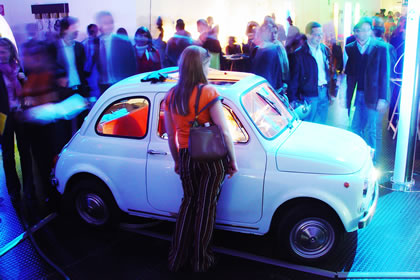
The car in an exhibition environment.
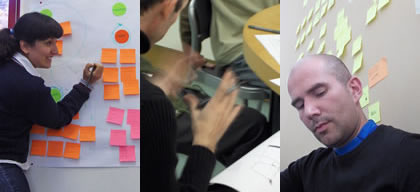
The car is a result of a lengthy process, invisible at the exhibition, but critical to producing the final result.
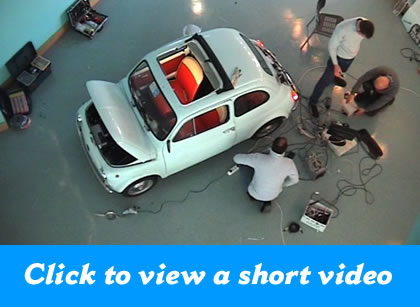
Click to view a short video illustrating process. Movie opens in a popup window (~4.5MB).
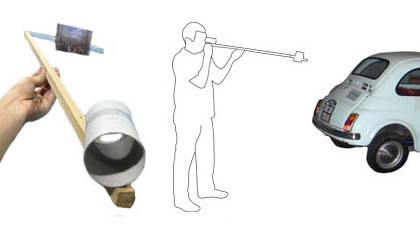
A physical prototype used to develop the video prototype.
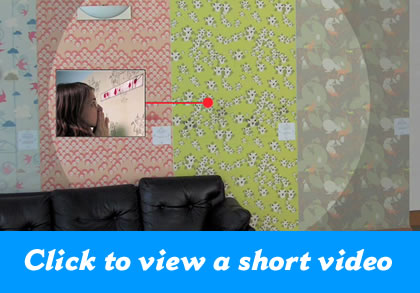
Click to view a short video prototype. Movie opens in a popup window (~7.7MB).
Anecdotal Evidence aims to reveal the hidden process behind exhibits and reframe exhibits in the context of a continuum.
By looking through a viewfinder and aiming it at various exhibits, visitors can receive anecdotal evidence about the exhibits in the form of a video narrative.
The design process, contrary to what design consultancy pitches would have you believe, is neither linear nor (really) organized. The neat and tidy exhibits in an exhibition are typically the result of a long and oftentimes messy process.
Could evidence of this process add depth and richness to exhibits? What could viewers gain from knowing more about the design process? Is there value in displaying evidence of brainstorms, sketches, conversations, inspiration?
Brief Using IDII's scheduling and events, create an instantaneous viewer that gives IDII exhibition visitors a 'peephole' or 'snapshot' view of what goes on at the Institute. The viewer should be designed to install and exhibit at any of the forthcoming IDII exhibitions, coordinated by the Institute Exhibitions Unit.
Design Considerations In the context of an exhibition, language barriers and background noise levels suggested a visual narrative as the best means of communication. I designed my interface to key off the physical presence of the exhibits in a way that does not overshadow the exhibits. My design also accounts for differences in layout and exhibit selection between exhibitions.
For the purposes of my project, I constructed exhibit narratives from extant photos, images, videos, and sketches. However, the construction of visual narratives would ideally be recognized as an integral part of the project process and documentation materials would be created as a matter of course.
Design Process This was the first design project I undertook alone at IDII. I used a rough physical prototype and a video prototype to explore and communicate the user experience.
Resources and Inspiration
Pentagram - Experience Music Project
Experience Music Project - Experience Guide